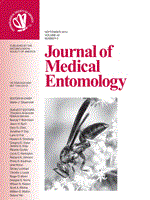We investigated the potential of carbon dioxide (CO2) fumigation as a method for controlling bed bugs, Cimex lectularius L. The effect of bed bug developmental stage, temperature, and CO2 concentration on the minimum time to kill 100% of bed bugs was determined. The minimum CO2 concentration lethal to all bed bug stages was ≈30% with 24 h exposure time at 25°C. The minimum fumigation time required to kill 100% of eggs using 100% CO2 at 20, 25, and 30°C were 3, 7, and 8 h, respectively; the minimum fumigation time to kill 100% of adult males/nymphs were 8,13, and 14 h, respectively. The minimum time to kill 100% of adult males/nymphs using 50 and 70% CO2 at 25°C were 18 and 16 h, respectively. We found that eggs were not completely killed after 24 h fumigation when the CO2 concentration was lower than 80%. Thus, bed bug eggs were more susceptible to 100% CO2 fumigation than nymphs and adult males but more tolerant than nymphs and adult males with lower CO2 concentration (50–80%). There were no significant differences among nymphs, adult males, and adult females in their susceptibility to 100% CO2 fumigation. A 24 h fumigation in sealed 158 liter (42 gallon) heavy duty garbage bags filled 90% full with fabric materials and/or boxes and 1,350 g dry ice per bag was sufficient to kill all stages of bed bugs hidden in the materials at room temperature (23–24°C). Sealed heavy duty garbage bags maintained ≥94% CO2 for at least 24 h. Custom-made double zipper plastic bags (122 × 183 cm) were also used to evaluate the effectiveness of CO2 fumigation for controlling bed bugs. Each bag was filled with fabric and boxes to 50–90% full. Bed bugs were hidden in various locations of each bag. CO2 was introduced into the bags through a CO2 cylinder. CO2 fumigation lasting 24–48 h was sufficient to kill all stages of bed bugs at room temperature, depending on the quantity of materials placed in each bag and whether CO2 was introduced one or two times at the onset. CO2 is an effective alternative to conventional fumigants for eliminating bed bugs hiding in infested household items such as clothing, shoes, books, electronics, sofas, and so forth.
How to translate text using browser tools
1 September 2012
Carbon Dioxide Fumigation for Controlling Bed Bugs
Changlu Wang,
Lihua Lü,
Ming Xu
ACCESS THE FULL ARTICLE
It is not available for individual sale.
This article is only available to subscribers.
It is not available for individual sale.
It is not available for individual sale.

Journal of Medical Entomology
Vol. 49 • No. 5
September 2012
Vol. 49 • No. 5
September 2012
carbon dioxide
Cimex lectularius
control
fumigation




